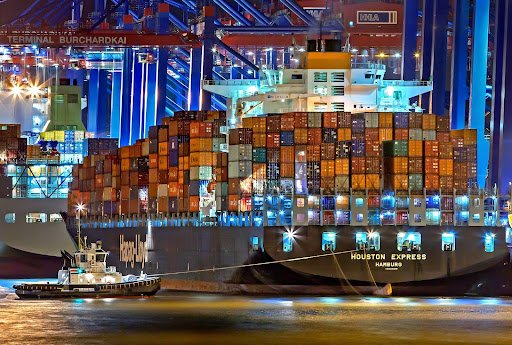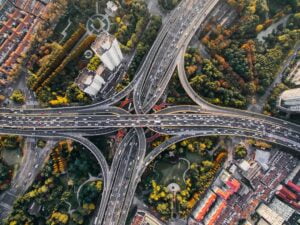Maritime transport is a complex endeavour. In between loading up cargo and reaching the destination, there are plenty of factors that can threaten the safety of the crew, cargo, and the ship itself. This is why it’s important to optimize the route of ocean vessels as much as possible. However, optimized routes go beyond just ensuring safety. An optimized route can also ensure maximum efficiency, cutting voyage time and fuel consumption.
If you’re in the maritime industry, you’d want to know about tech strategies to optimize your ships’ routes.
What is route optimization?
In ocean freight, route optimization is a strategy enabling a shipping company to find the most efficient route for its vessels. Traditionally, companies would just determine the shortest distance between two destinations and call it a day. But with the advancement of technology, route optimization has become more effective and complex. A route optimization strategy will take into account the following factors:
- Time of day
- Shipping routes
- Tolls
- Weather conditions
- Port congestion
- Operator habits
- Types of cargo
The benefits of route optimization

Lower shipping costs
Route optimization allows for faster voyages, lower fuel consumption, and minimizing security risks, all of which contribute to reducing shipping costs. Shorter trips mean faster turnaround times while better fuel efficiency means less money spent on fuel. By using routes prioritizing the safety of the crew, cargo, and the ship, shipping lines can save a lot of money that would otherwise be used on contingencies.
Creates healthy competition
Faster voyages mean shorter shipping times, increasing customers’ expectations. To keep up with higher customer expectations, shipping lines have to strive for an even higher optimisation standard. Companies will invest more in their operations to edge the competition.
Minimizes risk of accidents
Optimized routes prioritize safety, decreasing the risk of accidents at the port or at the sea. Modern route planners avoid ports that are congested or aren’t equipped with the cranes required to unload cargo. Furthermore, weather routing ensures ships won’t get caught in the middle of a storm or any undesirable weather condition.
It’s sustainable
By making it so ships burn less of their dirty fuel, route optimization is a great way of making a shipping operation more sustainable. The overall efficiency increase resulting from more optimized routes also means there is less waste generated in the operation, further reducing a fleet’s carbon footprint.
Using modern route planners
Tranzas’ Navi-Planner, OneOcean’s PassageManager, and StormGeo’s Bon Voyage System are among the top route planners available today. These route planning systems offer a whole suite of functionalities including but not limited to the following:
- Full nautical planning and cloud connection
- Recalculation of most optimal routes done via the cloud
- Regular weather forecasting
- Automatic voyage planning using up-to-date nautical charts
- Easy-to-use route manual correction tools
- Ship-to-shore route and data exchange
These are just some of the key features that these route planning systems offer to shipping companies. Needless to say, they are extremely versatile and cover a lot of functions. It should be noted that these systems work best when they’re linked to the company server.
Moreover, these systems are modular, giving shipping companies the ability to decide which functionalities to use depending on what their operations require. This modularity makes modern route planners flexible and easier to integrate.
Using a weather routing service
Weather routing services aim to provide vessels with an optimal route based on predicted current and weather conditions. Most route planning systems include some form of weather routing, but there are companies that provide dedicated weather routing services. Companies such as SOFAR Ocean use smart mooring and a network of spotter buoys to provide real-time surface and underwater data. Other companies providing weather services are Blue Water Optimum Speed Services and StormGeo.
Currents, waves, wind, and ocean swell — various types of weather phenomena — can have an adverse effect on vessel performance, costing companies a lot more money due to increased fuel consumption. Weather routing can help avoid this unnecessary expense, as it’s capable of reducing fuel consumption by as much as 3% and higher for larger vessels, according to the International Maritime Organization.
The following tech strategies aren’t directly related to routing, but they will complement any route optimization strategy you’re already using.
Giving your ships a nose job
In ships, less drag means less fuel consumption. To decrease drag, ships are designed with a bulbous bow — which cancels out the generated bow wave by creating another wave. Most ships today already have a bulbous bow, but not all are made the same. The design of a bulbous bow will depend on the shape and size of the ship, which means plenty of room for optimization.
You can improve the ETAs and fuel efficiency of your ships by using a better-designed bulbous bow. Doing a redesign seems to be too much work, but doing it can result in a significant reduction in fuel consumption. The Nippon Yusen Kabushiki Kaisha (NYK) and the Monohakobi Technology Institute (MTI) successfully reduced the carbon emissions of a container ship by 23% over half a year. The group achieved this by studying and remodelling its bulbous bow and installing MT-FAST, a fuel-saving device that maximizes a ship’s propulsive efficiency.
You can also redesign your ships’ bulbous bows to improve the effectiveness of slow steaming. Det Norske Veritas (DNV) found that bulbous bows designed for slow steaming can generate as much as 5% fuel savings or more per year.
Using an air lubrication system
An air lubrication system creates a layer of air bubbles between the ship’s hull and seawater, effectively reducing resistance and increasing fuel efficiency. The air bubbles are generated by supplying air to the bottom of the vessel. To maximize the effectiveness of such a system, the ship should have the right hull design. At best, an air lubrication system can result in large fuel savings and a 10-15% reduction in carbon emissions. Silverstream Technologies has created an air lubrication system that produces microbubbles under a ship’s flat hull, generating up to 5% fuel savings.
Conclusion
Ocean freight operators have a world of tech options for optimizing voyages and fuel efficiency. There are data-driven tech solutions such as route planning systems and weather routing while there are also physics-driven ones such as energy-saving bulbous bows and air lubrication systems. The technologies mentioned above are just some of the many technologies that companies can use in optimizing their operations.








Thank You for sharing the detailed information about Ocean freight. It is very helpful. Good luck for upcoming articles. PDS International is also providing best Ocean freight Services.
This is very interesting, You are a very skilled blogger.
I have joined your feed and look forward to seeking
more of your great post. Also, I have shared your site in my
social networks!
Nice post. I used to be checking constantly this weblog
and I am inspired! Very helpful info particularly the closing section :
) I care for such info a lot. I was looking for this particular
info for a very lengthy time. Thank you
and good luck.
Greate pieces. Keep writing such kind of information on your page.
Im really impressed by your blog.
Hi there, You have performed a fantastic job.
I will definitely digg it and in my view suggest to my friends.
I’m sure they’ll be benefited from this website.
Hmm it seems like your blog ate my first comment (it was super long) so I
guess I’ll just sum it up what I submitted and say,
I’m thoroughly enjoying your blog. I as well am an aspiring blog blogger but
I’m still new to everything. Do you have any recommendations for novice blog writers?
I’d genuinely appreciate it.